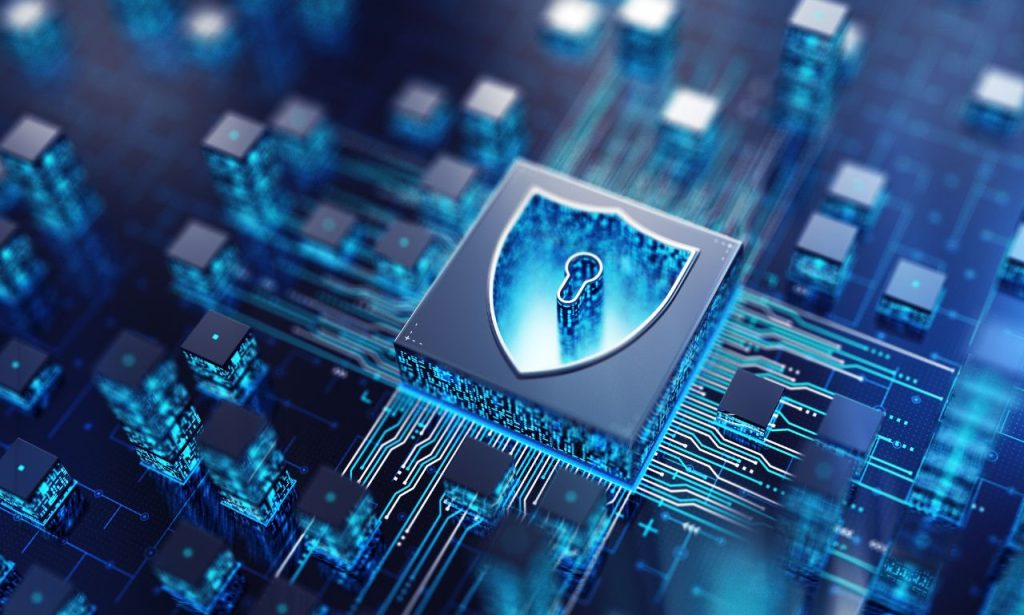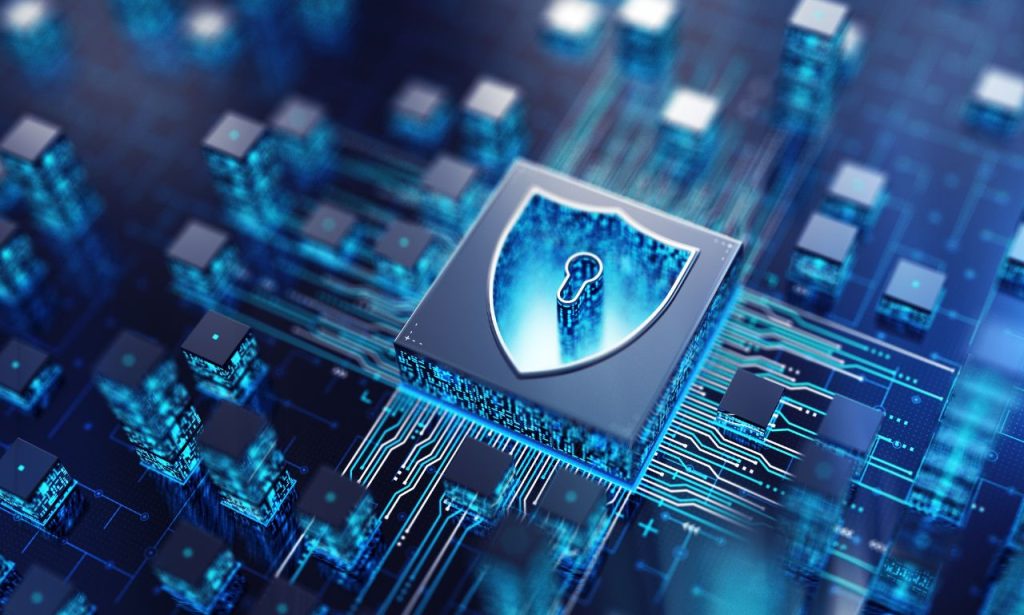In today’s digital-first world, cybersecurity isn’t just an IT concern—it’s a business survival issue. I’ve seen countless companies suffer devastating losses because they thought cyber-attacks only happened to the “big guys.” Trust me, hackers don’t discriminate. Regardless of your company size, they’re after your customer data, financial information, and intellectual property.
Throughout this article, I’ll walk you through practical cybersecurity strategies that businesses of any size can implement. We’ll cover everything from basic security hygiene, like software updates and password policies, to more advanced measures like encryption and risk assessment frameworks. By the end, you’ll have a roadmap to strengthen your security posture and protect what matters most to your business.
Keep Software Updated
You wouldn’t drive a car with faulty brakes, so why run your business on outdated software? Software updates aren’t just about getting new features—they’re your first defense against cyber threats. Hackers love finding vulnerabilities in outdated systems, making them easy targets for exploitation.
I recently consulted with a marketing agency that postponed updates because they were “too busy.” They spent 40 hours recovering from a ransomware attack that exploited a known vulnerability that had been patched months earlier. Implement a robust patch management system automatically updating your operating systems, applications, and firmware. For critical systems where automatic updates aren’t feasible, create a regular schedule for manual updates and stick to it religiously. Your future self will thank you when you’re not explaining to clients why their data was compromised.
Encrypt Key Information

Encryption transforms your sensitive data into unreadable code that’s only accessible with the correct key. Think of it as a digital safe for your most valuable information. If a breach occurs (and in today’s world, it’s often a matter of “when,” not “if”), encrypted data remains protected.
Focus on encrypting customer records, financial information, intellectual property, and any data subject to regulatory requirements. Use industry-standard encryption protocols for data both at rest and in transit. This means implementing SSL/TLS for website connections, encrypted cloud storage, and secure email communications. Many businesses overlook endpoint encryption—ensure that laptops, mobile devices, and removable media are encrypted, especially for remote employees. Remember, encryption isn’t just good security practice; it’s often a compliance requirement under regulations like GDPR and CCPA.
Deploy Antivirus Software
Antivirus software acts as your digital immune system, identifying and neutralizing threats before they damage your business. Modern solutions do far more than catch traditional viruses—they protect against ransomware, spyware, and other evolving malware variants.
Choose a comprehensive solution that includes real-time scanning, scheduled deep scans, and behavioral analysis capabilities. Many businesses make the mistake of installing antivirus software and forgetting about it. Your protection is only as good as your latest update. Configure your security software to update automatically and run regular scans during off-hours to minimize disruption to business operations. For extra protection, consider solutions that include Intrusion Detection Systems to monitor network traffic for suspicious activities. The investment in robust antivirus protection pales compared to a successful attack’s potential financial and reputational damage.
Use a Firewall
Firewalls function as security guards for your network, monitoring incoming and outgoing traffic based on predetermined security rules. They create a critical barrier between your trusted internal network and untrusted external networks like the Internet.
Set up both hardware and software firewalls for layered protection. Hardware firewalls provide network-wide protection, while software firewalls on individual devices offer an additional layer of security. Configure your firewall rules following the principle of least privilege—only allow traffic necessary for normal operations. Regularly review and update your firewall rules as business needs evolve. I’ve seen companies create temporary exceptions during projects and forget to remove them, leaving security gaps for years. Don’t make that mistake. Document all changes to firewall configurations and conduct periodic audits to ensure your rules remain appropriate and effective.
Ensure a Strong Password Policy
Passwords remain the keys to your digital kingdom, yet poor password hygiene continues to cause security breaches. I’ve conducted security audits where executives used their spouse’s name followed by “123” for accessing financial systems. This isn’t just risky—it’s negligent.
Implement a password policy requiring complexity (uppercase, lowercase, numbers, and special characters) and a minimum length of 12 characters. It requires regular password changes, but not frequently, and users resort to predictable patterns. Encourage the use of password managers to generate and store complex passwords securely. Implement multi-factor authentication (MFA) for critical systems to add an extra verification step beyond passwords. MFA dramatically reduces the risk of unauthorized access, even if credentials are compromised. Make password security a cornerstone of your cybersecurity training, emphasizing that even one weak password can compromise your entire network.
Secure Your Wi-Fi Network
Unsecured Wi-Fi networks are like leaving your office doors unlocked overnight—they invite trouble. Yet many businesses still use default router passwords or outdated security protocols that can be easily bypassed.
Start by changing default administrator credentials on all network devices and using WPA3 encryption (or at minimum WPA2) for your wireless networks. Create separate networks for employees, guests, and IoT devices to contain potential breaches. For guest access, implement a time-limited password system that changes regularly. Position your access points strategically to minimize signal leakage outside your physical premises. A surprising number of data breaches begin with attackers simply sitting in your parking lot, connecting to unsecured networks. Don’t make it easy for them. Consider implementing MAC address filtering for an additional access control layer on particularly sensitive networks.
Guard Against Physical Theft
While we focus heavily on digital security, physical theft remains a significant risk many cybersecurity plans overlook. A stolen laptop or smartphone can directly access your networks and data.
Implement physical security measures like access controls for server rooms, locked cabinets for network equipment, and security cables for devices in public areas. Create clear policies for devices taken off-premises, including encryption requirements and reporting procedures for lost or stolen equipment. Enable remote wipe capabilities on all mobile devices to erase sensitive data if a device goes missing. Train employees to never leave devices unattended in public places like cafes, airports, or conference rooms. Physical security might seem old-fashioned in the digital age, but it remains an essential component of comprehensive protection.
Use a Virtual Private Network (VPN)
VPNs create encrypted tunnels for internet traffic, protecting data even when employees use public Wi-Fi networks. With remote work becoming standard practice, VPNs are no longer optional for businesses of any size.
Select a business-grade VPN solution that balances security with performance and scalability. Avoid free VPN services, often with questionable privacy practices and inadequate encryption. Configure your VPN to require authentication for all connections and implement split tunneling judiciously—if at all—to prevent security bypasses. Create clear policies regarding VPN usage, especially for employees traveling internationally, where some VPN services may be restricted. Regularly audit VPN access logs to identify unusual patterns that might indicate compromised credentials. A proper VPN implementation ensures your data remains protected regardless of where your team members work.
Back up Your Files Regularly
When they do, backups become your business lifeline. Too many companies discover their backup strategy is inadequate only after disaster strikes.
Implement the 3-2-1 backup rule: maintain three copies of critical data, on two different media types, with one copy stored off-site. Automate your backup process to ensure consistency and reduce human error. Regularly test your restoration procedures—a backup is only valuable if you can recover data when needed. Consider both full and incremental backup approaches based on your recovery time objectives. Store backups in encrypted form and physically secure backup media. Cloud backup solutions offer convenience, but evaluate their security practices and compliance certifications before entrusting them with sensitive data. Remember that some ransomware targets backup systems, so isolate backups from your main network when possible.
Train Your Employees
Your employees are simultaneously your greatest security asset and your biggest vulnerability. I’ve seen million-dollar security systems bypassed by a single employee clicking a phishing link.
Develop a comprehensive security awareness program covering phishing recognition, safe browsing habits, social engineering tactics, and proper data handling. Make training engaging and relevant with real-world examples and simulations rather than dry compliance lectures. Regular phishing simulations should be conducted to test awareness and identify employees who need additional coaching. Create clear channels for reporting suspicious activities without fear of punishment. Foster a security-conscious culture where employees understand cybersecurity is everyone’s responsibility, not just the IT department’s. The most successful security programs I’ve seen make heroes of employees who report potential threats, reinforcing that security awareness is valued throughout the organization.
Carry out Risk Assessment

Risk assessment helps you identify your most valuable assets, recognize potential threats, and prioritize security investments where they matter most.
Start by creating an inventory of your digital assets and assigning value based on their importance to business operations. Identify potential threats to each asset category and assess both the likelihood and potential impact of various attack scenarios. Use frameworks like the NIST Cybersecurity Framework to ensure your assessment is comprehensive. Prioritize addressing high-risk areas first, and develop specific mitigation strategies for each identified risk. Risk assessment isn’t a one-time activity but should be conducted regularly as your business evolves and new threats emerge. Involve stakeholders from across the organization to ensure all perspectives are considered. The most effective security strategies are tailored to your business model, industry, and risk profile.
Conclusion
Cybersecurity isn’t a project with an end date—it’s an ongoing business practice that requires constant attention and evolution. The strategies outlined here provide a foundation for protecting your business from increasingly sophisticated threats. Remember that perfect security doesn’t exist, but implementing these measures will significantly reduce your risk and demonstrate to customers, partners, and regulators that you take data protection seriously.
Start by addressing the basics: software updates, strong passwords, and employee training. Then, gradually implement more sophisticated measures like encryption, VPNs, and formal risk assessment frameworks. The investment in cybersecurity may seem significant, but it pales compared to the potential costs of a major breach, both financial and reputational.
ALSO READ: What are the Potential Business Threats?
FAQs
Human error remains the leading cause, particularly falling victim to phishing attacks and using weak passwords across multiple accounts.
Conduct formal training quarterly, with monthly security updates and ongoing phishing simulations to reinforce awareness.
Yes, it provides financial protection against recovery costs, legal fees, and regulatory penalties, but it complements rather than replaces good security practices.
Conduct a thorough risk assessment to identify your most valuable assets and vulnerabilities before investing in specific solutions.
Start with high-impact, low-cost measures like strong password policies, regular updates, and basic security awareness training, then gradually add more sophisticated protections.



